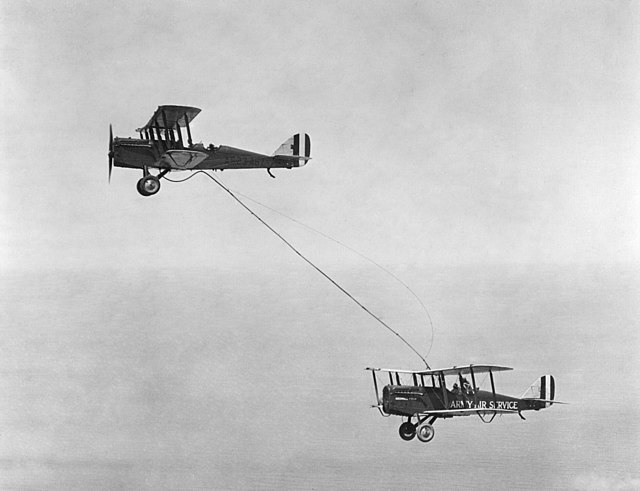1966 Palomares B-52 crash
The 1966 Palomares B-52 crash, also called the Palomares incident, occurred on 17 January 1966, when a B-52G bomber of the United States Air Force's Strategic Air Command collided with a KC-135 tanker during mid-air refueling at 31,000 feet (9,450 m) over the Mediterranean Sea, off the coast of Spain. The KC-135 was destroyed when its fuel load ignited, killing all four crew members. The B-52G broke apart, killing three of the seven crew members aboard.
The B28FI nuclear bomb, recovered from 2,850 feet (870 m) of water, on the deck of the USS Petrel.
Operation Chrome Dome flight path over southern Europe, showing refueling tracks
Boom operator's view of a B-52 from a KC-135 tanker
Alvin submersible
Aerial refueling, also referred to as air refueling, in-flight refueling (IFR), air-to-air refueling (AAR), and tanking, is the process of transferring aviation fuel from one aircraft to another while both aircraft are in flight. The two main refueling systems are probe-and-drogue, which is simpler to adapt to existing aircraft, and the flying boom, which offers faster fuel transfer, but requires a dedicated boom operator station.
A KC-135 Stratotanker refuels an F-16 Fighting Falcon using a flying boom
Capt. Lowell Smith and Lt. John P. Richter receiving the first mid-air refueling on 27 June 1923
The US Air Force Boeing B-50 Superfortress Lucky Lady II being refueled by grappled-line looped-hose during the first non-stop circumnavigation of the world by air (1949)
Dutch Air Force KC-10 refueling boom








